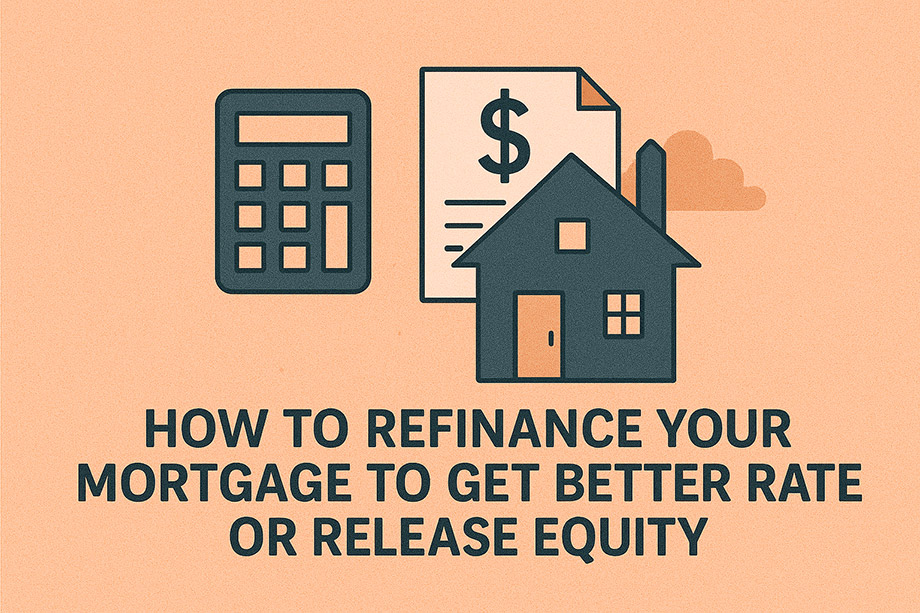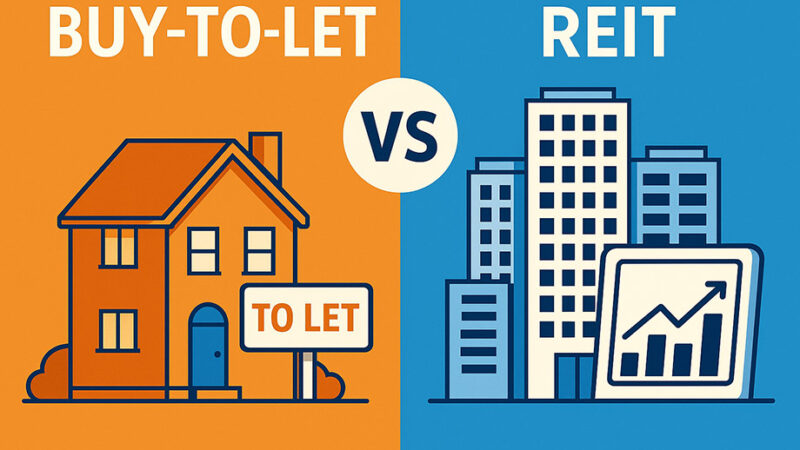How to Refinance Your Mortgage to Get Better Rates or Release Equity – A UK Homeowner’s Guide

Refinancing your mortgage can be a smart financial move, especially if you want to reduce your monthly payments or unlock some of the equity you’ve built in your home. For UK homeowners, understanding the refinancing process can seem daunting, but with the right information, you can make confident decisions that benefit your finances in the long run. This guide will walk you through how to refinance your mortgage to get better rates or release equity, helping you take control of your property finances.
Table of Contents
What Is Mortgage Refinancing?
Mortgage refinancing means replacing your current mortgage with a new one, usually with better terms. This could involve switching to a lower interest rate, changing the mortgage length, or borrowing more money against the value of your home. The two main reasons homeowners refinance are to reduce their monthly mortgage payments or to release equity to fund other expenses such as home improvements, debt consolidation, or investments.
Why Consider Refinancing Your Mortgage?
Refinancing is not right for everyone, but it can be beneficial under certain conditions. If interest rates have dropped since you took out your original mortgage, or your financial situation has improved, refinancing could save you money. Additionally, if you need access to cash for a major expense, releasing equity through refinancing can be a helpful option.
How to Know If You Should Refinance Your Mortgage
Before starting the process, ask yourself:
- Are current mortgage rates lower than my existing rate?
- Do I want to reduce my monthly payments or shorten my mortgage term?
- Am I looking to release some of my home’s equity?
- Are my financial circumstances stable enough to qualify for refinancing?
- Have I considered the costs involved in refinancing?
If you answered yes to one or more of these questions, refinancing could be worth exploring.
1. Understand Your Current Mortgage Details
The first step is to review your existing mortgage. Know your current interest rate, how much you owe, your mortgage type (fixed or variable), and any penalties for early repayment. Understanding these details will help you assess the potential benefits of refinancing.
2. Check Your Credit Score
Your credit score plays a significant role in qualifying for better mortgage rates. Obtain a copy of your credit report and correct any errors. A higher credit score increases your chances of securing favourable refinancing terms.
3. Research the Current Mortgage Market
Interest rates fluctuate, so keep an eye on the current UK mortgage market. Compare different lenders’ offers, including fixed and variable rates. Websites like MoneySuperMarket and Compare the Market can help you find competitive deals.
4. Calculate Your Home Equity
Home equity is the difference between your property’s current market value and the outstanding mortgage balance. Lenders usually allow you to borrow up to a certain percentage of your home’s value, commonly 75-90%. Knowing your equity helps determine how much you can borrow if you want to release funds.
5. Decide on Your Refinancing Goal
Clarify whether you want to:
- Lower your monthly repayments
- Shorten your mortgage term to pay it off quicker
- Release equity for other expenses
- Or a combination of these
Your goal will influence the type of mortgage product you choose.
6. Consider the Costs of Refinancing
Refinancing is not free. There are costs such as:
- Early repayment charges on your current mortgage
- Arrangement fees for the new mortgage
- Valuation fees for your property
- Legal and administrative fees
Make sure to add these costs into your calculations to determine if refinancing saves you money overall.
7. Speak to a Mortgage Advisor
A mortgage advisor can provide personalised advice based on your circumstances. They can help you compare deals, calculate costs, and guide you through the application process. Look for an FCA-registered advisor to ensure credibility.
8. Prepare Your Documentation
You will need to provide:
- Proof of income (pay slips, tax returns)
- Bank statements
- Identification documents
- Details of your current mortgage
- Information about your property
Having these ready speeds up the application process.
9. Apply for the Refinance
Submit your application to your chosen lender. The lender will assess your financial situation, conduct a property valuation, and perform credit checks before approving your mortgage.
10. Review and Accept the Offer
Once approved, carefully review the mortgage offer, including the interest rate, term, fees, and any special conditions. If satisfied, accept the offer and arrange for the legal process to complete.
Pros and Cons of Refinancing Your Mortgage
Pros
- Lower monthly payments: A reduced interest rate or extended term can free up cash flow.
- Access to cash: Release equity for home improvements or other financial needs.
- Potential to pay off mortgage faster: Refinancing to a shorter term can save you interest over time.
- Opportunity to switch mortgage type: Move from a variable to a fixed rate for stability.
- Improved financial management: Consolidate debt with the new mortgage.
Cons
- Upfront costs: Fees and charges can be significant.
- Early repayment penalties: Some mortgages have high exit fees.
- Longer mortgage term: Extending the term to lower payments can increase total interest paid.
- Qualification hurdles: Poor credit or unstable income may limit options.
- Stress and paperwork: The process can be time-consuming.
Final Thoughts
Refinancing your mortgage is a valuable tool for UK homeowners who want to reduce their monthly payments, access funds, or restructure their mortgage terms. By understanding your current mortgage, researching the market, and weighing the costs and benefits, you can make an informed decision that suits your financial goals. Always consider professional advice to navigate the process smoothly and secure the best possible deal.
Refinancing might seem overwhelming at first, but with a clear plan and the right support, it can be a straightforward way to improve your financial wellbeing. Whether you want better rates or to unlock your home’s equity, this guide equips you with the essential knowledge to take the next step.
Last Updated on July 21, 2025 by James Cartwright






